Know Your Lore: Who are the Drust?
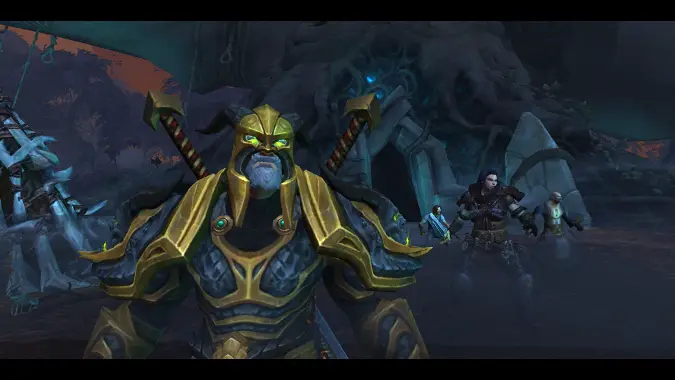
The Drust are both new and old. They’re very old, in that the majority of them died thousands of years ago when Kul Tiras was founded. They’re brand new because Battle for Azeroth is the first time any of us have ever heard of them, yet their legacy is deeply connected to the land and the origins of the Thornspeakers. The Thornspeakers are the Druidic circle that flourishes in Kul Tiras, connected to the Drust people and a division they endured long ago.
If you quested through Drustvar, you’ve seen the legacy of the Drust first hand, and despite the vast majority of them being dead they’re far from gone. From their realm of Thros, the Blighted Land, the hand of the Drust reaches out into modern-day Kul Tiras. But who were they, and what are they doing now?
Beyond this point lie spoilers for the Alliance side Drustvar questing storyline.
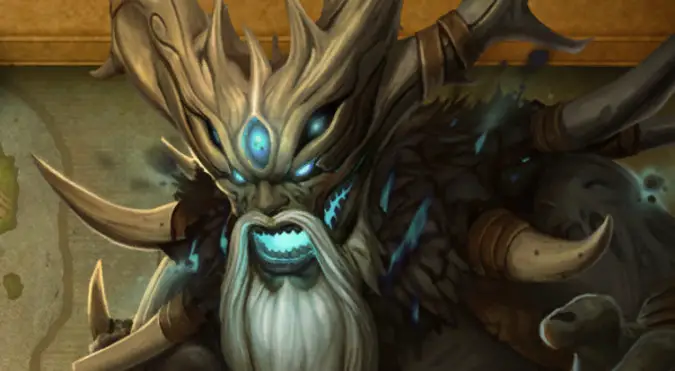
Out of the shadows of the past
All we really know about the Drust is that before sailors from the area that is today Gilneas landed there, the Drust were already there. How long? We don’t know, but long enough that Ulfar remembers a time before the rise of Gorak Tul and his dark magics. The ancient Drust practiced a form of Druid magic that seems similar to but not directly descended from that which Cenarius taught Malfurion Stormrage, but it’s unknown where they learned it or who taught it to them. It’s possible they simply discovered it on their own at some point after the Sundering destroyed ancient Kalimdor and created the modern continents and islands that dot the Great Sea.
We can speculate, of course. The Drust Stele in the area near Arom’s Stand point to the Drust and Humanity sharing a common origin at a distant point in the past, although this is based solely on the similarity between the Drust and the Vrykul and Humans. When seen in images from the past, Gorak Tul and his Drust followers appear to be Human — are they an offshoot of the Vrykul, afflicted by the Curse of Flesh? We know many Vrykul made the trip south following the trail of Tyr and Archaedas, it’s possible some ended up settling on what is now Kul Tiras and deciding to stay.
The Drust themselves report a history of warfare even before the coming of the Kul Tiran’s ancestors — they carved a stele that shows them to have fought beings much like themselves or great beasts, beings that resemble Gnomes, and even the Naga before Humans came along. If they are an offshoot of the Vrykul just as Humans are, that would fit the pattern — Vrykul are a notoriously fractious lot and fight among one another often. As Titan-Forged they would have access to powerful ancient secrets like those of Freya, who helped create the Emerald Dream and thus has a primal connection to the same magic Druids tap.
It should be noted that Kul Tiras is almost directly in-between Stormheim and the Eastern Kingdoms. If you were taking a ship south from Northrend after the Sundering, going from the Howling Fjord to Stormheim and then Stormheim to Tirisfal where Tyr died, Kul Tiras would be a very convenient place to stop. Especially if you didn’t know where you were going.
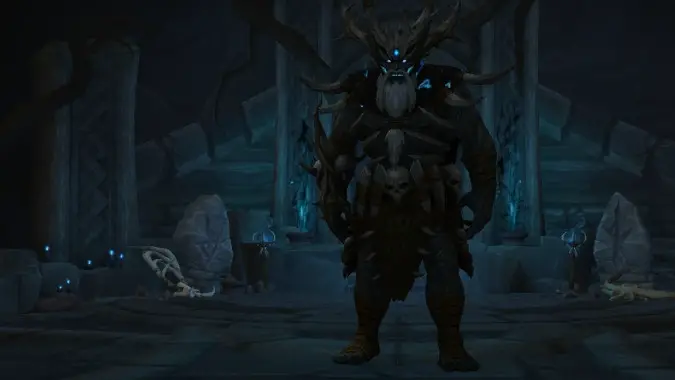
The rise of Gorak Tul
Gorak Tul was a divisive figure for the Drust — clearly a powerful and ruthless leader, he also alienated the Thornspeakers to the point of open revolt. It’s possible the figures on the stele who looked like the Drust or great beasts were Drust — specifically, Thornspeakers who turned their back on their people due to concern for Gorak Tul’s corrupt ways.
Whatever else he was, Gorak Tul was a powerful wielder of a particularly sinister form of magic that allowed one to call souls back from the realm of the dead and imprison them in effigies before using them to power wood and stone constructs in what feels very much like a perversion of the Thornspeakers’ own Druidic arts. We don’t as yet know where Gorak Tul learned his powers, but they rely on runes and carvings very similar to those used by Vrykul in Stormheim and Northrend. And the similarities between Gorak Tul’s Thros and the realm of Helheim can’t be ignored.
Gorak Tul pushed the Thornspeakers into open revolt, but we don’t know how far that went, or if there was an actual conflict between the Druids and the rest of Drust society. However, when the Humans showed up on Kul Tiras, things changed rapidly.
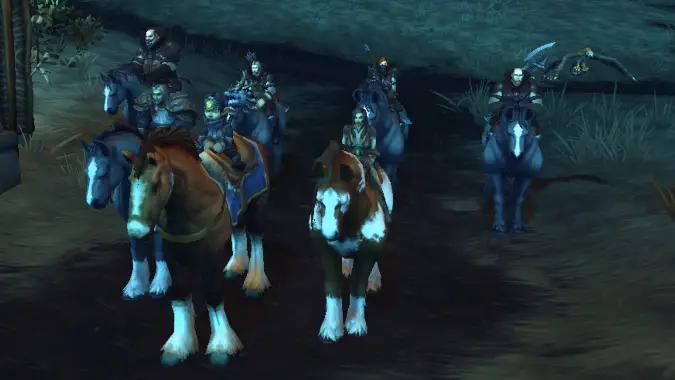
The last Drust war
At first, Gorak Tul must have seen little to worry about in the Humans who’d landed on his island. They were by and large simple settlers, not particularly well armed, most of them sailors. The Drust had fought many wars against far more fearsome adversaries. When the Humans made contact with the Drust, Gorak Tul simply slaughtered any of them within reach. Many of them were unarmed farmers, and Gorak Tul’s followers wallowed in their bloodlust as they butchered defenseless prey.
They anticipated an easy campaign.
But the Humans quickly showed they had a great deal more spine than Gorak Tul had anticipated, and without the support of the Thornspeakers — indeed, the Druids went over to the Kul Tirans and began over time to teach the Druid arts to the newcomers who were suitable — they eventually found themselves on the defensive. Beings like Althair the White Stag, who had tired of Drust brutality as well, aided the Humans under the leader Arom Waycrest, and in time Waycrest managed to turn the tide against the Drust in part due to secrets he’d collected on the weaknesses of their magics.
Gorak Tul, rather than accept defeat, began capturing the souls of his own people in torturous effigies that tormented their spirits past madness — then placed them in wicker and stone abominations to fight on past death. These constructs were fearsome opponents, but Arom Waycrest and his Order of Embers managed to confront the Drust leader and dealt him a wound that should have been mortal. His control over his construct army lost and most of his people slain (perhaps at his own hand to make more constructs), Gorak Tul slunk away to Thros, the Blighted Land.
This is where the Drust reside today. Save for Ulfar, who survives to the present day, it seems that Gorak Tul’s madness and evil has made them a race of wrathful spirits trapped in Thros, seeking to return to the realm of the living even if it can only be in horrible mockeries of once-living forms. Gorak Tul has not been idle over the millennia, however, and the evil now stirring in Drustvar quickly becomes apparent as his doing — the Heartsbane Coven may take their orders from the mysterious Mother, but she clearly serves Gorak Tul’s desire to return and wreak vengeance on the descendants of those who defeated him long ago.
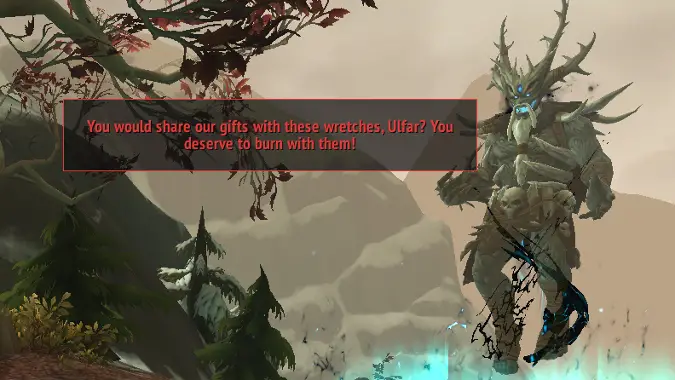
What secrets yet remain
The Drust are a fascinating people because we as yet know so little about them. Many clues point to a Vrykul origin, but they are far from proof of one — after all, superficially Humans and Elves resemble each other quite a bit but aren’t at all related. The fact that the Drust use runes and resemble Humans does not mean they are Vrykul or descended from Vrykul afflicted by the Curse of Flesh, even if their facility with creating stone and wood constructs to house souls would seem to suggest such a connection.
I hope we find out more about the Drust moving forward. Perhaps they’re less dead than they appear, and we could even see playable Drust in the future? I can hope.
Please consider supporting our Patreon!
Join the Discussion
Blizzard Watch is a safe space for all readers. By leaving comments on this site you agree to follow our commenting and community guidelines.
 @MatthewWRossi
@MatthewWRossi



